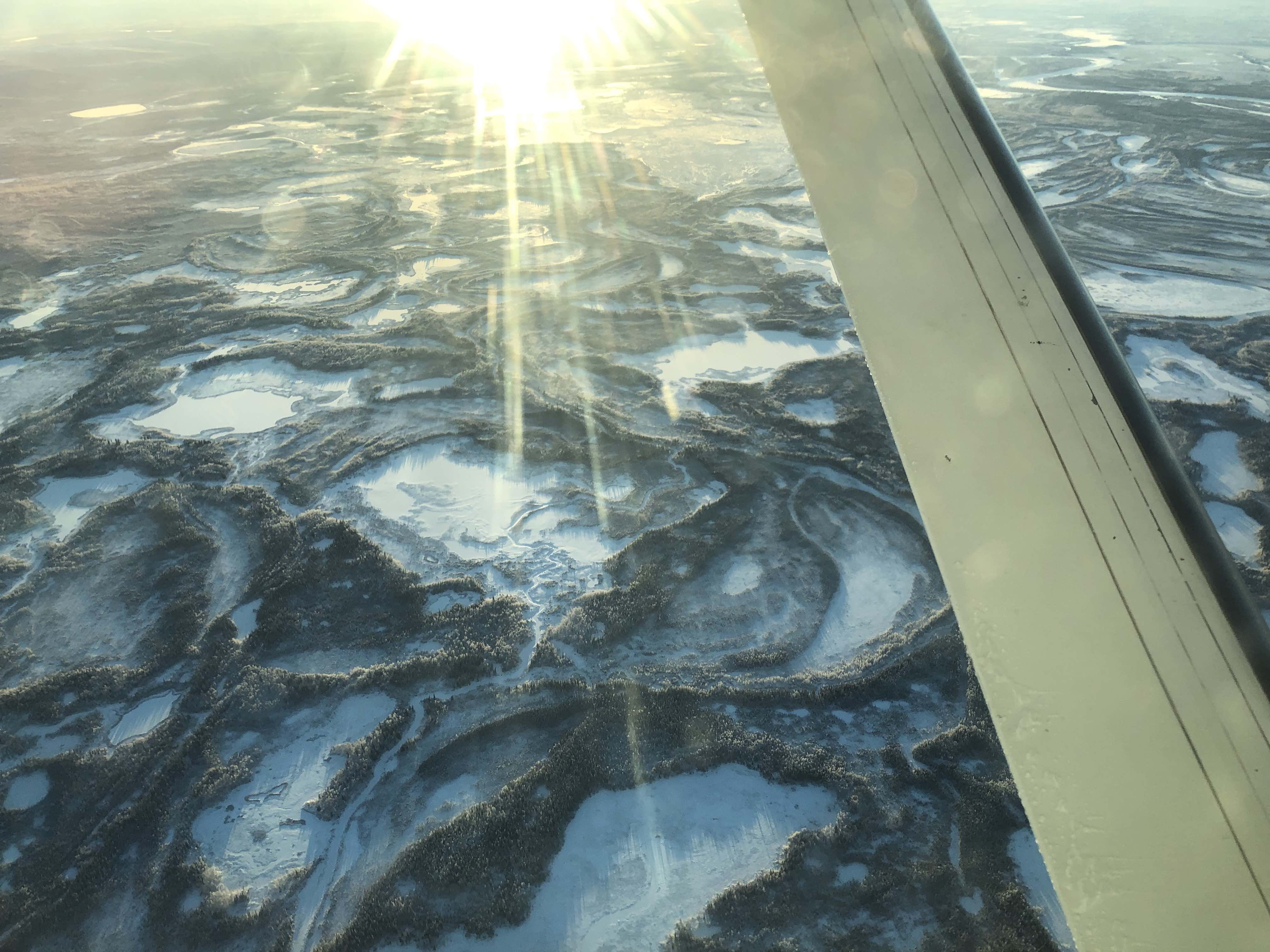The Discussion Continues - EVs in Remote Alaska

By Michelle Wilber, research engineer at ACEP
Puffing above the Yukon River valley, like the raised parts of a well-stuffed quilt, snowy birch follow the soft contours of favored soils and elevations. I look out the window of a Wright Air flight as I fly to Galena. The quilting looks tacked down by the stitching of serpentine creeks and rivers. Spruce poke up too, smaller and smaller as they edge down to the wetlands. This is the real Alaska highway system — navigable waters and overland routes. Soon, once the top layer of the river freezes, this will be accessible by snowmachine.
Along with food and materials for our second public meeting on electric vehicles in Galena, Jen Schmidt, an associate professor at UAA’s Institute of Social and Economic Research, and I carry a circulation pump for the broken boiler at the bed and breakfast we are staying at. Despite a lack of contractors to fix boilers or vehicles, local residents of Galena find ways to get the parts they need, develop the local expertise and get the job done. We are part of the demonstration that where there is a will or a need — there is a way.
We are continuing our discussions with local stakeholders and community members for the National Science Foundation’s Navigating the New Arctic program’s “Planning Collaborative Research: Electric Vehicles in the Arctic (EVITA)” project (award # 2127171). The focus of the EVITA project is to strengthen community connections by conducting planning activities that bring together engineering and social science research in partnership with three representative remote islanded microgrid communities in Alaska — Kotzebue, Galena and Bethel.
Initial community meetings in April 2022 focused on barriers to EVs in rural Alaska, what we already know about cold-weather performance, and current vehicle use characteristics. In follow-up meetings held in each community this past November, we brought the results of the previous meeting back to the communities and presented an Alaska EV calculator for feedback (tinyurl.com/AKEVCalc), in addition to energy cost and emissions models for typical community use cases. We also asked participants to identify benefits of EVs and research and information needs to consider their adoption. One strong message from the communities is a worry about the lack of the local availability of maintenance for EVs. To address this valid concern, we engaged in conversations with schools and vocational education centers about developing local workforce skills.
Despite the hesitation about new technology in a place far from qualified EV mechanics, smooth roads and mild winter temperatures, in April we were able to show the success of Kotzebue Electric Association’s Nissan Leaf. A local resident drove a Tesla to the November meeting in Galena.
Most of the taxis in Bethel, the cab capital of the US, are hybrid-electric sport utility vehicles that are performing well on the rough roads. Hybrids save money in fuel use as they operate with a battery energy storage system and an electric motor, in addition to the usual gas engine.
Thinking back on the aerial view of the vast Alaska highway system of road-free water and land, it is clear that the transportation transition underway in the rest of the world will look different up here in Alaska. Different vehicle types will be needed to meet different ways of life, and cold weather and electrical grid constraints will play into costs and solutions. But one thing is clear, where there is a will to make things happen, there is a way to learn, innovate and make it work.
For more information on this and other research on EVs, please contact Michelle Wilber at mmwilber@alaska.edu.
View of the Tanana River watershed from the flight to Galena. Photo by Michelle Wilber



